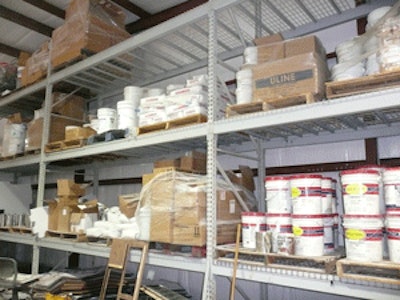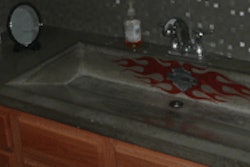
Mirror mirror on the wall ... the reality is, you can't be it all! I see many new companies as well as established contractors make the mistake of wearing too many hats only to realize at the end of the year there are no profits and a great deal of time was wasted on trying to become something you had no business pursuing.
If you're thinking of branching out your decorative concrete business, look in the mirror and ask yourself some honest questions: Do I want to be the best contractor in town? Do I want to distribute because my back and knees are worn out from a career of contracting? Do I want to manufacture? Do I want to teach? Do I want to consult? If you try to be everything to everyone, you will find yourself on a runaway locomotive headed toward a 4-foot-thick concrete wall!
When we set up our business we factored in many considerations, starting with a detailed 5-year business plan outlining our short-, mid- and long-term goals. In year one, for example, we decided to dedicate roughly 50 percent of our time toward installations, 30 percent toward distribution and 20 percent on education and training. After all, as young entrepreneurs we had bills to pay, which meant we needed an instant source of "bringing home the bacon" as they say. In years two and three we raised the percentages on education, consulting and distribution while taking on fewer installations. The goal at year five was to spend 70 percent of our time on education and training, 20 percent on consulting and 10 percent on distribution, mainly as a convenience to our customers. Unlike many young companies who never established a business plan early on, we stuck to ours with only a few diversions along the way. Sticking to your detailed business plan will absolutely help you accomplish your goals, which is a very rewarding feeling.
Recently, one of my close friends and a very successful contractor called me for advice on becoming a distributor and teacher. He asked if I thought it was a good idea for him to take on these aspects of the business while continuing his contracting division. My question to him was, "When you wake up in the morning, what do you want to be? Are you ready to make your shop accessible to customers 8 hours a day, 5 days a week? Are you ready to answer technical phone calls such as, 'The gallon of stain we bought from you turned out too dark' or 'The gallon of sealer we purchased for our countertop turned white, and how do we strip it?' "
When you become a distributor for a certain product, that company will oftentimes expect you to give product demonstrations at your facility, which was the case for my friend. I asked him if he really wanted his potential competition sniffing around his shop looking at all of the products and equipment he uses on a regular basis.
Roughly three months into his new endeavor, and after his first workshop, I received a voice mail from him that simply said, "Damn it, you were right!" I'm happy to say he realized he had no business distributing, and when he regained his focus his contracting business took off in a big way.
I'm not suggesting that adding distribution to your company's repertoire is all bad. In fact, it can be very gratifying, especially when you receive e-mails or phone calls from your clients talking about their successful projects. If you feel this is the direction in which your company needs to go, take into account some very important considerations:
Do you have warehouse space? Depending on the product line and how many different products you plan to distribute, you will need a climate-controlled space with easy access for your customers and racks to keep products off of the ground. When we started to distribute, the addition of the new products took up over 75 percent of our warehouse making it difficult to access our equipment. Do you have a forklift? Although some companies have lift gates for their trucks, not all do. This means you will need to rent, lease or purchase a forklift, and maintain it on a regular basis.
Are you committed to protecting your investment and dealing with freight carriers? One of our first shipments as a new distributor was an entire flatbed of concrete countertop mix. Upon delivery we noticed under every pallet a pile of white powder, which of course meant someone damaged the bags while loading the trucks. We immediately took digital pictures and called the manufacturer to inform them of the situation before we unloaded any product. The end result was 23 damaged bags and a claim against the freight carrier. In addition, remember that certain products have a shelf life, which means rotating the inventory and ensuring your stock will not sit on the shelves unsold and become outdated.
Are you competing against your customers? I hear stories of businesses continuing the contracting side of the business while also distributing. The reality is that some companies are becoming distributors so they can be price advantaged. In essence, they are their own best customers. In one instance, a contractor/distributor was actually getting leads from the manufacturer which allowed him to adjust his bids accordingly which certainly was not fair to competing contractors.
These are just a few examples and considerations to keep in mind if you are thinking about adding additional divisions to your pre-existing company. Focus on your company's strong points and think through everything before you take on something you don?t want to handle and may regret.
Bob Harris is the founder and president of the Decorative Concrete Institute, Temple, Ga., which provides hands-on training in architectural concrete. He has personally placed or supervised the placement of more than 3 million square feet of decorative concrete and is the author of a best-selling series of decorative concrete books and DVDs. For more information, call (877) DCI-8080 or visit www.decorativeconcreteinstitute.com.




















